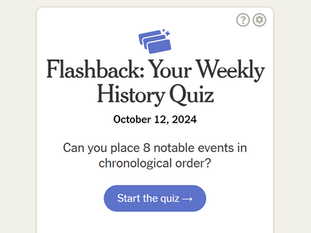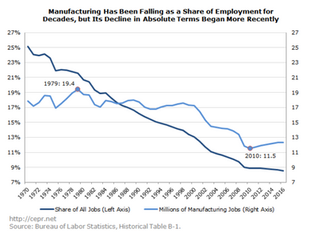
MATTHEW HAMMOND
Aspiring Social Studies Teacher,
former Antitrust Enforcer & Dad
The Northern Lights near Reykjavík, Iceland (Feb. 2023, MCHammond)
I am reading Douglas Thomas & John Seely Brown's A New Culture of Learning: Cultivating the Imagination for a World of Constant Change (2011) for one of my teacher prep classes. I plan on sharing my thoughts as I read through the book. After setting the stage, the rest of my posts will be in the form of reactions. (I will include occasional page, chapter, or section references for the convenience of those who may have read or are reading the book.)
The first in a series of posts related to A New Culture of Learning (NCL) (chs. 2–3).
(references in parentheses are to NCL.)
Setting the stage (ch. 1)
For Thomas & Brown, the "new culture of learning" (NCL) is about the powerful learning that is taking place everyday and everywhere outside the classroom.
They focus on a simple question:

What happens to learning when we move from the stable infrastructure of the 20th century to the fluid infrastructure of the 21st century, where technology is constantly creating and responding to change? (p. 17)
And the authors believe the question has a simple answer which they go on to explore over the course of the next 100 pages.
The simple answer is a little radical: learning without books, teachers, or classrooms. As an aspiring teacher, I might see this as a threat, but I'm optimistic that there is still a role for teachers and classrooms, as do the authors. If I didn't, I probably made a mistake taking early retirement and changing my law license to inactive. (p. 18)
While there is a place for teachers, the NCL is a transformational shift from my education growing up in the 1970s and 1980s which is an even greater shift in half the time from the one-room schoolhouse Laura Ingalls attended on Little House on the Prairie to my elementary and secondary education. This staple of primetime TV from 1974 to 1982 depicted life on a Minnesota farm in the 1870s-1890s. As I recall, the schoolhouse was a bastion of rote memorization, students used slates, and canings added drama to the plots. In high school I blew all my multiple-summer job savings on my first computer--an IBM Portable Computer with MS-DOS 2.10, 256 kilobytes of memory, and two 5.25 floppy diskette drives (no hard drive)--which was basically a computer installed in a sewing machine case.
Now that computer can't hold a candle to the lowest-end smartphone today or even my old Palm Pilot, a precursor to the smartphone like a Model T is a precursor to a Tesla.
The new culture of learning is enabled by, and I'd say inherent in, the nearly inexhaustible amounts of information and modes of connection and communication made accessible by the internet. Access to the internet alone is insufficient, but when combined with bounded and structured environments with freedom to experiment and play is the substrate that feeds the new culture of learning. In the abstract, I found it difficult to follow the authors' conception of a bounded and structured environment, but once the reading turned to specific examples, it became clear. Here are a few examples from early in the book: an online coding community like GitHub, massively multiplayer online games (MMOs) like World of Warcraft or Star Wars Galaxies, online discussion groups like Reddit, and online communities centered around a common interest. (pp. 18-20)
The authors believe that the interplay between the sea of information and bounded/structured environments, allowing unrestrained play, questioning, and experimentation, spark imagination and support learning, growing, and exploring through a person's every day activities over the course of their life. They call this "arc of life" learning. (pp. 18-19)
So what do I think?
I think that everyone needs to learn to navigate this new world. For me, this means that I have to make the effort to explore and learn more about social media. While I have learned a lot about social media in the course of investigations and cases in my previous life, I have not used social media in the rest of my like other than by clicking on specific links people send me or in articles I'm reading. When it comes to social media would be the person with the least social media experience or savviness in any classroom I taught in. That cannot stand. If I continue to shun social media as a teacher, I will be willfully ignoring part of my students' world and a fertile substrate for learning. (I also have a duty to facilitate my students learning how to safely navigate the modern world, including social media.) While I had already realized I needed to expand my horizons, the beginning of the book has made it even clearer how vital that is. Accordingly, it has been added to my to-do list.
I found the evolution and societal rules of the Scratch community in Sam's Story (p. 20) fascinating. I was amazed that the Scratch community evolved/adopted a supportive, possibly altruistic, morality and norms that are the antithesis to the anarchy and savagery of Lord of the Flies that aptly describes many parts of the internet. I was a bit surprised by the importance of attribution at the core of Scratch's remix culture because I don't feel that value is modeled very frequently in popular culture. But it is clear that the community's morality is what provides the freedom to experiment safely and has cultivated a learning environment across its members. I'm envious, but not enough to start coding again, at least for now.
Unsurprisingly, Teaching in a Galaxy Far, Far Away (p. 23) stood out, but it is a lovely and scary example for teachers. It should be required reading for teachers. At USC, a professor tested a class on MMOs, looking at them from various academic perspectives. The class included lecture and related academic discussion and also in-class discussion of students' game-play experiences to illustrate the concepts being explored. The tragedy of this anecdote was that as the students became more enthusiastic about the course and pushed the professor to devote more time to discussion of gameplay, the professor became convinced he needed to start over from scratch to reimagine the class. The anxiety about losing control over the course seemed to blind the professor to the learning that was going on. The final exams went well beyond anything that was covered in the classroom and demonstrated an unexpected depth of knowledge. And the exams showed that they had formed a community where they learned from each other.
This scenario is a teacher's dream--putting students in an environment where they take on the responsibility to teach themselves and each other and the learning likely continues even when the course ends. But I completely understand the anxiety and fear of giving up control of a lesson because you don't know where it will go. We probably need to redefine the destination of the lesson to be focused around meaningful learning more than specific content. I hope that I can bring myself to let go and allow the students to take themselves further than I can alone. I wonder if in future iterations of the course, the professor joined the students in the MMO and was able to observe this phenomenon live.
Gaming Across Generations (p. 27) made me reflect on my own experience but in a very different context. The author's observed that online gaming provides a context where children can be an expert who are accepted by adults in the community. I immediately thought of having to set the time on VCR clocks flashing "12:00" for my parents and grandparents anytime they lost power. In my life technology has created multiple opportunities for me to teach my father and grandfather, even when I was a child. Without these, my grandfather would have been unapproachable.
In my previous career as a lawyer, the rise of technology used in the practice of law and by companies in the regular course of business provided many opportunities for me to teach much more seasoned colleagues. And it resulted in opportunities to be the expect and teach outside of my organization. The demand of technology also opened the door for me to take on significant responsibilities much earlier in my career than expected. The need form my organization to competently master the technology broke down widely held, preconceived notions about how long you had to be practicing law before taking on certain levels of responsibility that permeated large-law-firm practice and the Antitrust Division early in my career.
The opening chapter also effectively drove home that truly meaningful learning seems to require some level of collaboration among peers to really reach its peak.






